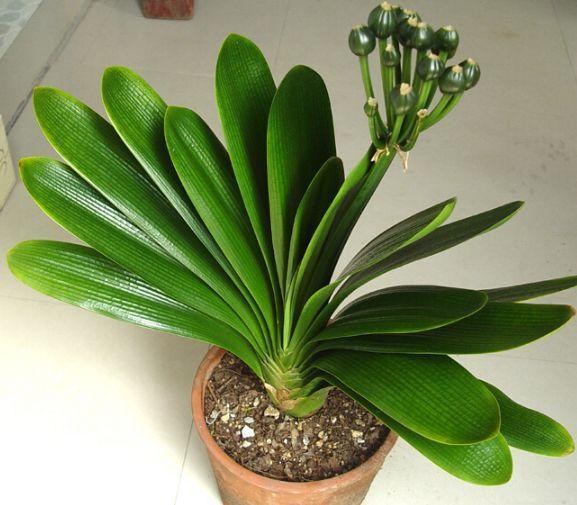the unit-Unit 7 The new students
一 : Unit 7 The new students
一、教学目标 与要求
通过本单元教学,使学生进一步掌握用来询问、辨别人物的有关句型。巩固已经学到的物主代词用法,进一步学习其他物主代词,并初步接触祈使句的使用方法。在本单元,还要学习辨认、朗读6个国际音标。
二、教学重点与难点
1.句型:1)We/You/They are… 2)Are we/you/they…?
2.语法:1)初步学习祈使句的用法; 2)学习our, your, their 等复数形式的物主代词。
3.语音:学会辨认、朗读[ei],[$],[p],[b],[t],[d]等6个音标。
三、课时安排
本单元共4课时,每课1课时。
二 : Book 1B Unit 3 The Bund教案(1)
一、学情分析:
本班学生通过一个学期的英语学习,已掌握部分学习用品类,动物类,颜色类,动作类等词汇,能听说i’m … i ‘ve got… i like… it’s…等常用句型,能进行简单的日常问候,但我班学生都来自农村,对于本课所学的这几个地点他们大都没有见识过,因此教学时可充分运用媒体,把本课的四个地点组成一幅美丽有趣的上海风景图,以全体学生游览上海为主线,以学生描绘上海美景为主话题,让学生初步了解地铁的标志、大剧院的设施,南浦大桥的形状等。让学生在玩乐中习得的同时,对语言进行实践和运用,同时也激发学生对上海的热爱。
二、教学目标:
1、认识wonderland中的建筑名称metro, nanpu bridge, shanghai zoo, grand theatre, 能熟练运用这些建筑名称。
2、能看图或单词: metro, nanpu bridge, grand theatre.
2、能进行单词与图片的配对。
3、能听懂介绍事物的句子this is… that is…
4、能用this is … that is…介绍事物。
5、能用较多的形容词、较多的句型来描述所学的地点。
6、能听懂grand theatre的对话内容,并能模仿grand theatre录音的语音语调表演对话。
7、在模仿和表演grand theatre的基础上,根据场景的变化,对材料进行整合,做角色替换练习
8、能了解上海,热爱上海
三、课时安排:2教时
四、教学准备:图片,实物,多媒体课件,录音机
the first period
一、教学目标:
1、能看图说出单词: metro, nanpu bridge, grand theatre.
2、能进行单词与图片的配对。
3、能听懂介绍事物的句子this is… that is…
4、能用this is … that is…介绍事物。
5、能用较多的形容词、较多的句型来描述所学的地点。
6、能了解上海,热爱上海。
二、教学重点:1、能熟练听、说、读单词:metro, nanpu bridge, grand theatre
2、能用this is … that is…介绍事物。
教学重点:能用较多的形容词、较多的句型来描述所学的地点。
三、教学过程:
一、 pre-task preparation
1.daily talk:
(1) are you sandy?
(2) are you a teacher?
(3) what’s this / that?
(4) is this a pencil?
(5) what colour is it?
(6) how is this pencil?
(7) have you got a yo-yo?
(8) do you like this plane?
(9) what have you got?
2. sing a song <the wheels on the bus >.
二、while-task procedure
1. learn: ship
t: hello, children. where are you from? (引出shanghai, chongming)
we are from shanghai. did you go to shanghai?
today is a fine day. let’s go to shanghai. how can we go to shanghai?
(出示图片:ship) t: what’s this? (引出ship)
(1) read the word
(2) make a sentence with ship
(3) chant : get on the ship.
ship, ship, ship, go, go, go
2. learn: grand theatre
t: here is shanghai. how is shanghai? (出示有关上海的图片)
what’s this? (出示大剧院, 引出: grand theatre) we can watch the play, listen to the songs, watch the dance and so on.
(1) read the word.
(2) ask: how is the grand theatre?
(3) make a chant: grand theatre. grand theatre. how beautiful.
grand theatre. grand theatre. how big.
….
grand theatre. grand theatre. i love you.
3. learn: shanghai zoo
t: here we are. is this the grand theatre? is this the park?
what’s this? it’s shanghai zoo.
(1) read the word.
(2) ask: are you at the shanghai zoo?
what can you see in the shanghai zoo? (出示图片)
(3) make a chant: panda, panda, look at the panda! how fat!”
giraffe, giraffe, look at the giraffe! how tall.
……
oh, so many animals!
(4) t: who wants to be a panda / m…?
s1: i am a panda. i am lovely. i am in the shanghai zoo.
s2: ……
4. learn : metro
t: how can we go to the shanghai zoo? (出示图片)
s: by bus. by car.
出示地铁标志:引出metro
(1) read the word.
(2) chant: metro, metro, metro.
long, long, long.
metro, metro, metro.
go, go, go.
(2) practice: i go to the grand theatre by metro.
i go to the shanghai zoo by metro.
i go to ______________ by ______.
5. learn: nanpu bridge
(1) t: look at the picture. is this metro / shanghai zoo / grand theatre?
what’s this? (引出nanpu bridge)
(2) read the words: bridge, bridge, nanpu bridge
(3) how is nanpu bridge? (引出how long, how beautiful…)
(4) learn the other bridge: yangpu bridge,
(4) make a chant: how long! how long! yangpu bridge.
how long! how long! nanpu bridge
6. learn the sentences: that is…
(1) look at the picture. t: what’s this ? s: it’s …
t: yes. this is nanpu bridge
t: what’s that? s: it’s …
t: yes. that is shanghai zoo.
(2) practice the sentence.
e.g. look, that is the shanghai zoo.
how beautiful!
that is the grand theatre.
how big.
三、post-task activity.
1. listen and read after the tape recorder.
2.play a guessing game.
3. match the pictures and words.
4.make a dialogue:
e.g. a: is that the nanpu bridge?
b: no, it’s the yangpu bridge.
a: how beautiful! i can see many cars.
5. shanghai is so beautiful! we all love shanghai !
book 1b unit 3 the bund教案(1) 来自61阅读。
三 : 《Unit 2: In the circus》教案
一、 案例背景分析:这一课的单词是一些较大动物的学习,学生对这些动物还是比较熟悉和喜欢的.因此,我想通过一些问答句的操练,让学生了解动物的基本特征,来学习词汇,并通过猜谜,编儿歌等激发兴趣.
二、1.教学内容:
a:掌握词汇:monkey, panda, lion, elephant
b:了解词汇:lovely,climb,bamboo,grey, fierce
2.教学目标:
(1) 通过听说问答,激发学生的学习兴趣,同时培养学生的语感。
(2)掌握有关马戏团的基本词汇,强化学生听与说的技能。
三.教学过程:
step 1:pre-task preparation。
1. say a rhyme。
(设计思路:作为课堂教学的准备,这一活动有助于学生集中注意力,做好上课的准备。)
2. revision
(设计思路:依据二年级学生的特点和认知水平,教师借助多媒体课件,对要学习的动物有所了解。
step2:while –task procedure。
1、利用课件教学单词:monkey lovely climb,并能运用简单的句子进行回答(设计思路:通过问答句,知道猴子的特征,给学生留下深刻的印象。)
what do you see? i see a monkey。 how is the monkey? it is small/ thin/lovely. what can the monkey do? it can climb the tree.
2. make a chant.
教学生编儿歌:
monkey, monkey.
it is small.
monkey, monkey.
it is lovely.
monkey, monkey.
it can climb.
monkey, monkey.
i like it.
3、教学单词 :panda bamboo lion strong fierce elephant grey及其运用.(每一种动物的教学同上.)step3: post-task activity
1.复习单词,掌握单词的读音.
2.猜谜
(设计思路:通过该活动,帮助学生将枯燥的单词学习变的形象化,同时将动物的特征融入谜语,有利于学生思维能力的培养.)
3. make a riddle
学生跟剧老师的谜语,自己编谜语,并互猜.让学生了解动物特征,并能用简单的语句进行描述.
三.课后反思
我较好地完成了本节课的教学目标和教学内容,其中最成功的一个环节是新知识的整体呈现。我将枯燥的单词教学巧妙地融入问答之中,学生能通过问答了解动物的特征,并能用简单的语句进行描述.对单词动物的名称也能逐渐会读能说了.教学重点也在不知不觉中突破了。形式多样的语言活动贯穿于课堂教学的始终,使学生在体验,实践,参与,合作与交流中习得语言和运用语言.在这节课的教学实践中,我也发现了一些需要调整和改进的地方,比如,由于出现的生词较多,因此,掌握不够充分,导致学生在运用上有所困难,语言输出不够流畅,而这点应在之前的语言活动中予以加强。
四 : Unit 5 Crossing the road 第六课时
unit 5 crossing the road黄浦区第一中心小学 赵健【教学设计(teaching design)】第六课时 (6th period)一、主要内容 (main contents)revision 二、学习目标(objectives)1、学生能够理解red light. stop! yellow light. wait! green light. go!的含义且能够根据这些指令做出相应的反应。2、学生能结合前一单元所学习的交通工具名称用look at … it’s…等句型熟练表达指令和事物的一些特性。3、学生能熟练运用简单的祈使句go! stop! wait!表达指令。4、学生能运用形容词fast, slow来对事物的速度进行简单的描述。5、学生能够使用句型the …is fast/slow.更完整地表述事物的速度,并能用祈使句look!来引起对方的注意。6、学生能够朗诵本单元中的英语儿歌。 三、教学建议( teaching suggestion )1、任务前期准备阶段(pre-task preparation section) 通过儿歌、击鼓游戏、快速反应等形式,活跃课堂气氛,培养学生乐学的心理,为接下来的课堂教学做铺垫。 activity 1 ( rhyme ) 1、教学辅助(aids) 录音机2、活动过程 (process)stepscontentsmethodspurpose1rhyme学生跟着录音机念儿歌。复习所学的儿歌,以营造良好的学习氛围。2rhyme学生随着节奏,一边念儿歌一边配以动作。 activity 2 (game) playing the drum1、教学辅助(aids) 纸, 指示牌 2、活动过程(process)stepscontentsmethodspurpose1go! stop! wait!教师将go! stop! wait!这三句话写在纸上,摊开在桌上,学生根据教师手中表示go! stop! wait!的指示牌,请一位学生根据看到的指示牌用手在go! stop! wait!这些纸上边说边拍打,如击鼓般。用游戏让学生动脑动手,激发他们的学习热情,让他们在会说句子的基础上,进行认读句子的操练。2go! stop! wait! 请学生在小组中进行游戏。提高操练的覆盖面。 activity 3 (quick response )活动过程 (process)stepscontentsmethodspurpose1red light. stop! yellow light. wait! green light. go!教师说口令,学生根据口令做出相应的动作。复习巩固所学的祈使句。2red light. stop! yellow light. wait! green light. go!…个别学生学做小老师,说出交通灯的颜色,全体学生说出并做出相应动作。激发学生的参与意识。3red light. stop! yellow light. wait! green light. go!以竞赛的形式,男女学生俩俩组合。先由男同学发指令,女同学做出相应的动作,然后由女同学发指令,男同学做出相应的动作。看看男女同学谁的反应快。既增强语言活动的趣味性,又拓宽语言活动的操练面,使每个学生都有开口说话的机会。 2、任务中期实施阶段(while-task procedure section) 通过创设情景,设置操练环节,使学生能够复习巩固本单元所学习的内容,并通过讨论、完成练习册上的内容,达到听说读写四能并进的目的。 activity 4 (quick response)1、教学辅助(aids)1)电脑(2a-u5-p6-1)2)屏幕 2、活动过程 (process)stepscontentsmethodspurpose1look at the light. it’s … go! stop! wait!cross the road.let’s go!教师在屏幕上出现一个交通灯,此交通灯上的三个红黄绿灯都会依次自动快速闪烁。教师一按鼠标,停止自动闪烁,此三个灯中有一个会亮着,请学生立即用句型look at the light. it’s … go! stop! wait!反应出来。通过此游戏,以激发学生的学习兴趣,锻炼他们的快速反应能力,也为下一个环节打下埋伏。2look at the light. it’s … go! stop! wait!cross the road.let’s go!教师继续进行此项活动,只是在停止后,请学生自由组合,两两展开对话。请学生在快速反应的基础上展开交流,以培养他们的交往能力。 activity 5(guessing game) 1、教学辅助(aids)1)电脑(2a-u5-p6-2)2)屏幕 1、活动过程 (process)stepscontentsmethodspurpose1look at the …it’s…i like the…i don’t like the …. 在屏幕上出现两种动物,请学生用句子look at the …it’s…i like the…i don’t like the ….描述一下这两种动物。通过描述小动物这一任务,让学生把所学语言运用于实际。2the …is fast.the … is slow. 请学生用句型the …is fast. the … is slow.猜测一下哪一种动物跑得快那一种跑得慢。接着,教师可以出示其他的一些动物或交通工具让学生来猜测。用猜谜的游戏提高学生学习积极性,并让他们在实际的情境中进行交流。activity 6(exercises )1、教学辅助(aids)1)配套练习册2)录音机 2、活动过程(process)stepscontentsmethodspurpose1练习册第十六页listen and write the correct number in the box听录音,按要求完成练习。培养学生良好的听的习惯。2练习册第十六页listen and write the correct number in the box以pair work的形式进行校对。发挥学生之间合作学习的作用。 activity 7 (exercises)活动过程 (process)1、教学辅助(aids)1) 配套练习册2) 录音机 2、活动过程(process)stepscontentsmethodspurpose1练习册第十七页listen and colour the light.按要求完成练习课堂上完成练习册中相关单词的训练。2练习册第十七页listen and colour the light. 校对以达到巩固复习所学内容的目的。3、任务后期完成阶段(post-task activity section) 在学生能够巩固所学知识的基础上,教师通过提供阅读材料、让学生编交通小报等活动形式,使学生能够将所学知识与生活实际相联系,并能学以致用。 activity 1 (reading comprehension )活动过程 (process)1、教学辅助(aids)阅读材料 2、活动过程(process)stepscontentsmethodspurpose1reading comprehension教师将关于飞机,轮船和火车的交通知识的阅读材料(配以图片),发给各个小组。让学生在熟练掌握课本知识的基础上,适当增加相关的课外知识,拓宽他们的知识面,丰富他们的语言量。2reading comprehension学生以小组的形式进行阅读理解。让学生通过合作学习,互相帮助,共同提高。 activity 2 (making newspapers)活动过程 (process)1、教学辅助(aids)纸张 2、活动过程(process)stepscontentsmethodspurpose1 发给每小组学生一张卡纸,请他们拿出准备好的彩色笔。为编交通小报做准备。2newspaper教师指导学生以小组的形式编写并绘制交通小报。在小报中,可以有各种形式,如故事,儿歌,猜谜等等,只要是围绕交通这一主题即可。通过编小报,培养学生将新旧知识整合的能力。3newspaper各小组互相交流,阅读其他小组的交通小报。通过学生间的互相交流,促进他们取长补短,互相提高,并培养学生的主动交往能力。 附件:媒体制作说明2a-u5-p6-1在屏幕上显示一个交通灯,此交通灯上的三个红黄绿灯都会依次自动快速闪烁。点击鼠标,停止自动闪烁,此三个灯中只有一个会亮着。(注:能循环使用) 2a-u5-p6-2建议用authorware制作在屏幕上出现两种动物。点击鼠标,播放此两种动物的一段flash动画,看哪种动物跑得快。可以照样多制作一些动物或交通工具的flash动画。







